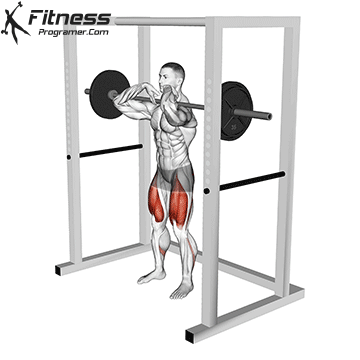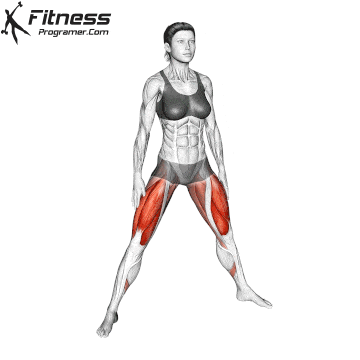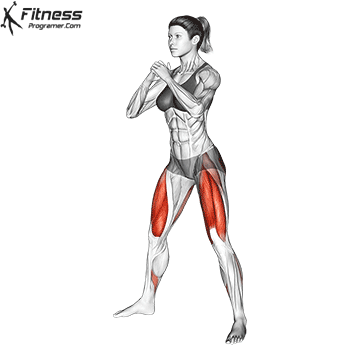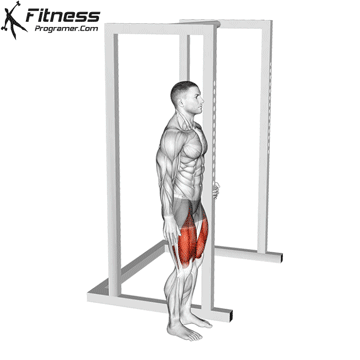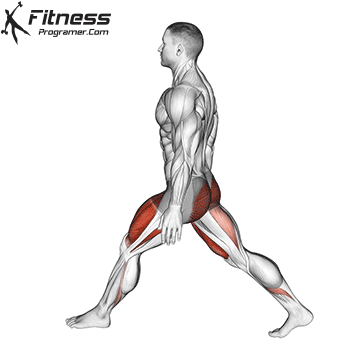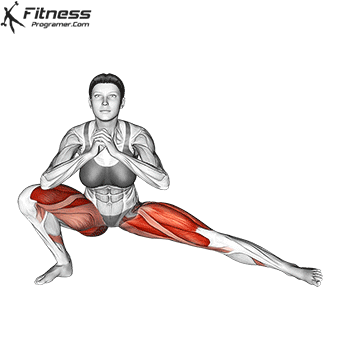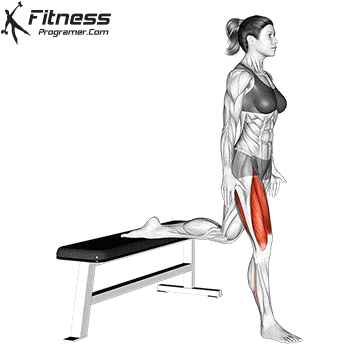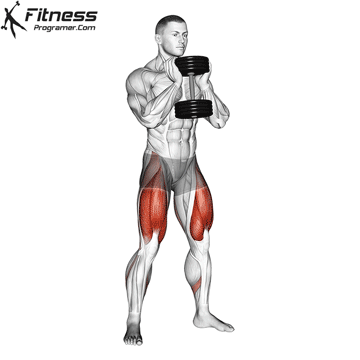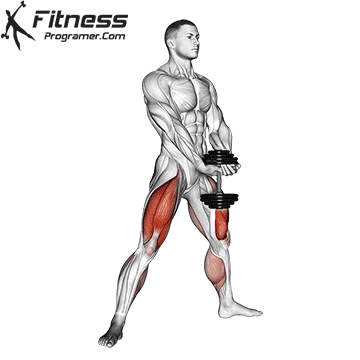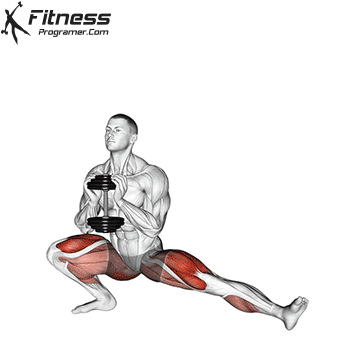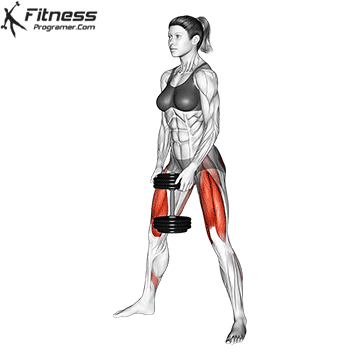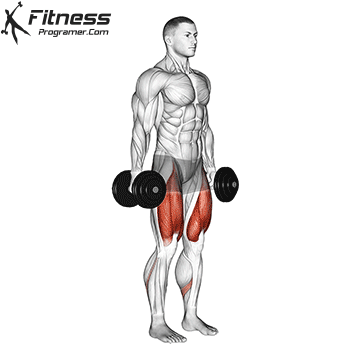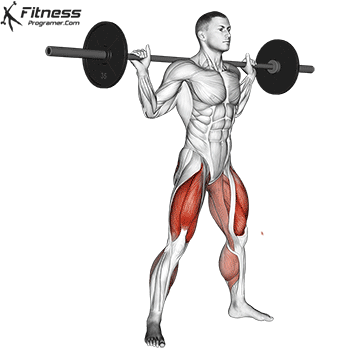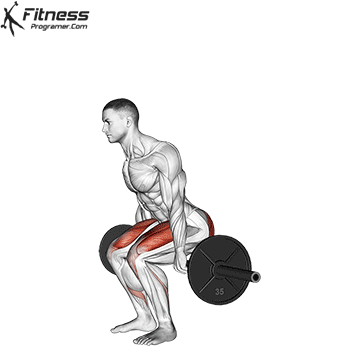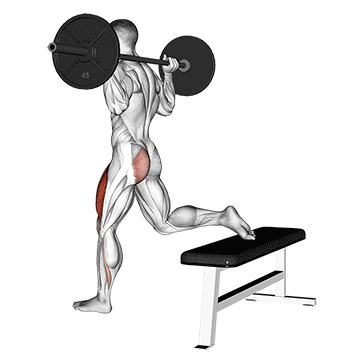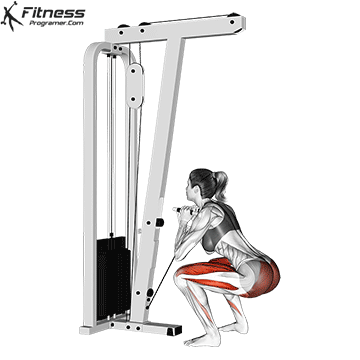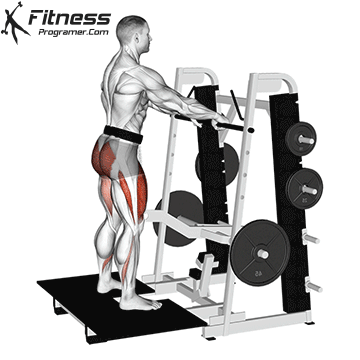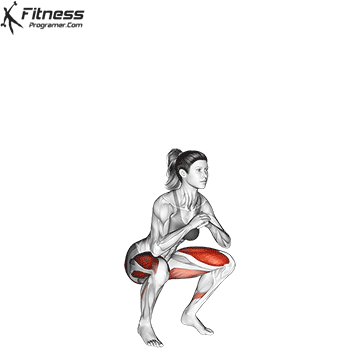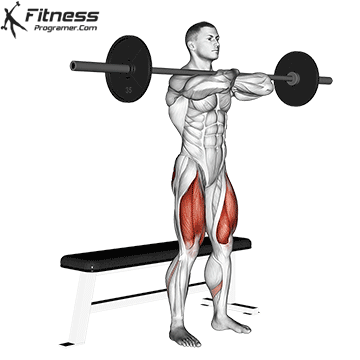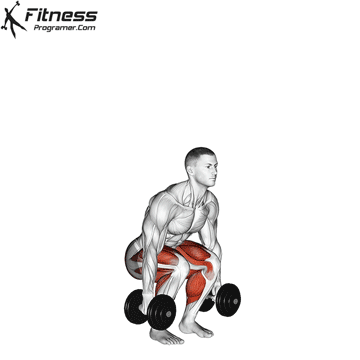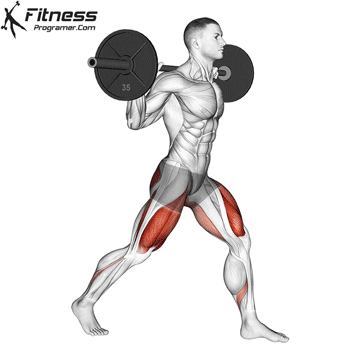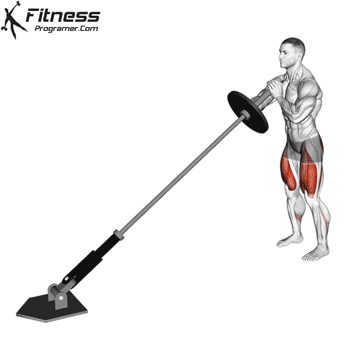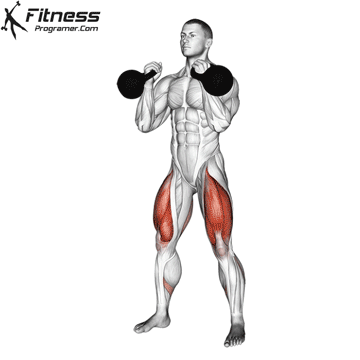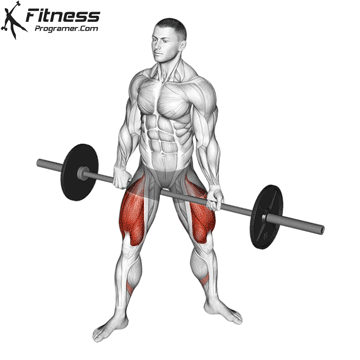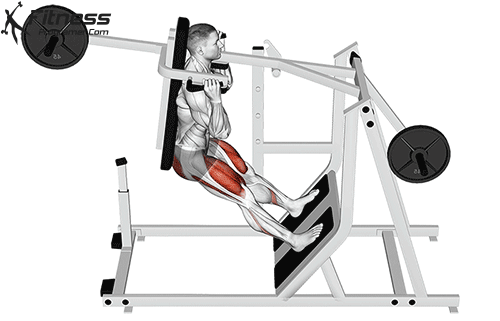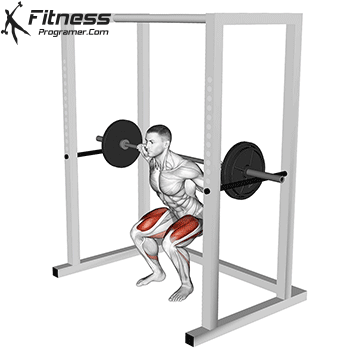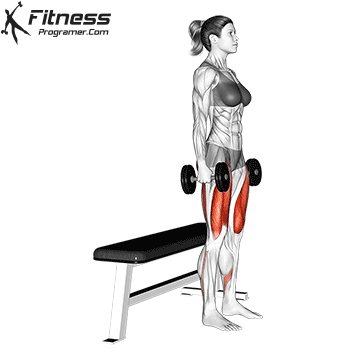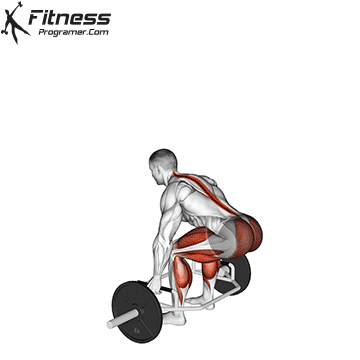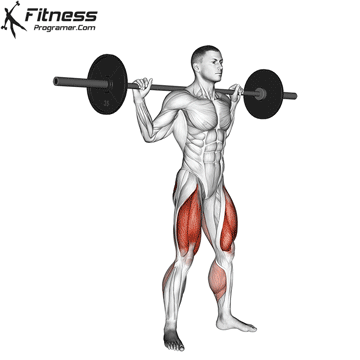Overview
The barbell pin front squat is a variation of the front squat performed inside a squat rack with safety pins set to a specific depth. Starting each rep from the bottom position eliminates momentum and improves strength, positioning, and control. It’s ideal for athletes looking to improve quad development, squat technique, and starting power.
How to do Perform Barbell Pin Front Squat
Set the safety pins in a power rack to just below your front squat bottom position. Place the barbell on the pins.
Step under the bar, assuming a front rack position with elbows high and chest upright.
Brace your core and position your feet shoulder-width apart with toes slightly out.
Drive upward through your heels, lifting the bar off the pins until you reach a full standing position.
Lower the bar under control back onto the pins to complete one rep. Pause briefly before the next rep.
Repeat for the desired number of reps, maintaining a strong core and upright posture.
Tips for Proper Form
Keep your elbows high to maintain a solid front rack and prevent bar roll.
Engage your core throughout the lift for stability and spinal support.
Push through your midfoot and heel, not your toes.
Set the pins at the correct depth to ensure full range of motion and safe positioning.
Pause briefly on the pins between reps to avoid bouncing or using momentum.
Common Mistakes
Letting the elbows drop, which shifts the load forward and compromises form.
Using too much weight, which leads to poor form and reduced range of motion.
Bouncing off the pins, which negates the strength benefits of the pause.
Poor setup depth, making the movement too shallow or overly difficult.
Neglecting core bracing, which can lead to rounding of the upper back.
Benefits of the Barbell Pin Front Squat
Enhances Starting Strength: Each rep begins from a dead stop, increasing your ability to generate force without relying on momentum.
Improves Squat Depth Consistency: Training from the bottom helps reinforce proper depth and posture under load.
Targets the Quadriceps Effectively: The upright torso and pin start put more tension on the quads, ideal for leg development.
Teaches Better Positioning: Forces lifters to maintain a strong front rack and upright spine, improving overall squat mechanics.
Reduces Joint Stress: Starting from the bottom limits knee and back strain by eliminating the eccentric load and rebound.
Useful for Rehab and Rebuilding: Great for those returning from injury, as the range and load can be precisely controlled.
Builds Confidence Under Load: Training from a controlled position at the bottom helps lifters feel comfortable in deep squat positions.
How to Incorporate Into Your Routine
- For Beginners: Use light weight for 2 to 3 sets of 5 to 8 reps to learn control and bar positioning.
- For Hypertrophy: Perform 3 to 4 sets of 8 to 12 reps with moderate weight, emphasizing muscle tension.
- For Strength: Do 4 to 5 sets of 3 to 5 reps at heavier loads, focusing on power from the bottom.
- For Functional Training: Use 3 sets of 6 to 8 reps to improve squat technique and positional strength.
- For Circuit Training: Include as a compound lower-body lift for 10 reps using manageable loads.
- For General Fitness: Perform 2 to 3 sets of 6 to 10 reps with good form for lower-body strength.
- For Mobility or Recovery: Use an unloaded bar to practice bottom-position squatting with pause holds.
Muscles Worked
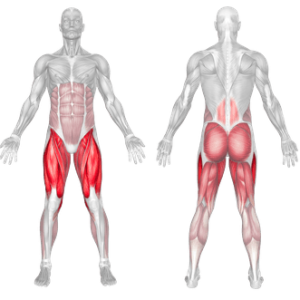
Frequently Asked Questions
Can I use straps if I lack wrist mobility?
Yes. Straps looped around the bar can help maintain a front rack position if your wrists are tight.
Is this a substitute for regular front squats?
It can be. It’s especially helpful for building strength out of the hole and reinforcing proper squat depth.
Do I need to reset the bar after each rep?
Yes. Touch the bar to the pins and pause briefly before starting the next rep to maximize training benefit.
What if I cannot get low enough to reach the pins?
Adjust pin height slightly and work on mobility over time. Do not start too shallow or with poor form.

